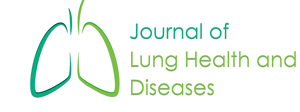Commentary: In silico identification of potential key regulatory factors in smoking-induced lung cancer
DOI: 10.29245/2689-999X/2017/1.1104 View / Download PdfSalem A. El-aarag1, Mahmoud ElHefnawi2,3*
Treatment Outcome of Tuberculosis Patients in Selected Health Centres in Addis Ababa: a Five Year Retrospective Study
Yonas Alem1, Solomon Gebre-Selassie2*
Background: Tuberculosis is the leading cause of morbidity and mortality killing about 1.8 million people each year. Ethiopia is seventh on the list of high burden countries for tuberculosis. Monitoring outcome of tuberculosis treatment and identifying the specific reasons for unsuccessful treatment outcome are important in evaluating the effectiveness of tuberculosis control program.
Objective: This retrospective study was conducted to analyze the trend of tuberculosis and treatment outcomes at three health centers in Addis Ababa.
Methods: A total of 6178 tuberculosis patients visiting three health centers during 2012 were included in the study. Data of patients on demographic characteristics, year of treatment, disease category, and treatment outcomes were recorded. Data on treatment outcome as cured, treatment completed, failed, died, defaulted, or transferred were collected according to WHO recommendations.
Results: Of the 6178 patients, 3151(51%) were males and 3027(49.0%) were females. The mean age of the study subject was 32.07±14.0. Smear positive pulmonary tuberculosis was 1670(27%), smear negative pulmonary tuberculosis in 2242(36.3%) and extrapulmonary tuberculosis in 2262(36.6%). Treatment outcome was successfully in 4919(79.6%), treatment failure in 42(0.7%), defaulters in 533(8.6%), died in 396(6.4%) and transferred out in 288(4.7%). Treatment success rate was steadily increased across the years from 76.2% in 2006 to 83.6% in 2010 (p<0.001). Female tuberculosis patients had higher treatment success rate of 81.3% while males had 78% success (p=0.001). Patients in the age group of 25-35 years had a significantly low treatment success rate compared to the other age group (p<0.001).
Conclusion: The treatment success rate of pulmonary and extrapulmonary tuberculosis patients treated at the 3 health centers was 79.6% which was lower than the WHO target of 85%. The higher default and death rate in the study area is a serious public health concern. So community mobilization, defaulter tracing, improved supervision, health education and enhanced case detection rate should be implemented in order to increase the treatment success rate in the study area.
DOI: 10.29245/2689-999X/2017/1.1106 View / Download Pdf Retrospective analysis of Gefitinib and Erlotinib in EGFR-mutated non-small-cell lung cancer patients
Chao Pui I1,3*, Cheng Gregory1, Zhang Lunqing2, Lo Iek Long3, Chan Hong Tou3, Cheong Tak Hong3
Objective: The objective of this study was to compare the efficacies of gefitinib and erlotinib in treating EGFR-mutated non-small-cell lung cancer (NSCLC) patients.
Methods: 319 EGFR-mutated NSCLC patients who had been treated with gefitinib or erlotinib at a Macau government hospital between 2005 Jan and 2015 Dec were retrospectively reviewed. Primary endpoint was overall survival (OS); progression-free survival (PFS) and disease control rate (DCR) were also analyzed.
Results: 259 patients were included in OS analysis. Nearly all patients were Asian (>99%). The median age in gefitinib group and erlotinib group were 62.5 and 60 respectively. Female patients predominated in gefitinib group (71.8% vs 46.6%, p<0.0001) and there was significantly more smokers or ever-smokers in erlotinib group (19.2% vs 35.0%, p=0.0046). Most patients were at a late stage of disease (stage III and IV ~85%) and >60% of patients received EGFR-TKI first-line. The median OS and PFS in gefitinib group and erlotinib group were 20.2 versus 26.3 months (p=0.0912) and 11.9 versus 13.4 months (p=0.0162) respectively, DCR was 72.1% versus 81.1 % (p=0.0799). Although erlotinib resulted in the better outcome, the difference was only significant with PFS. In the subgroup of patients receiving TKI first-line, erlotinib also showed a longer OS (19.2 vs. 34.6 months, p=0.0165).
Conclusion: For patients with EGFR mutations, gefitinib and erlotinib resulted in similar overall survival and disease control rate, but a significantly longer progression-free survival was observed with erlotinib. In patients receiving TKI as first-line therapy, erlotinib-treated patients also had a longer overall survival.
DOI: 10.29245/2689-999X/2017/1.1105 View / Download Pdf